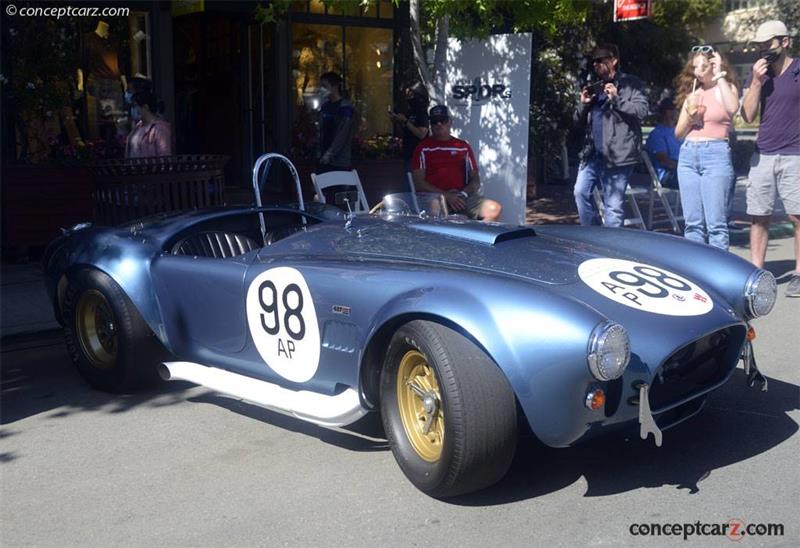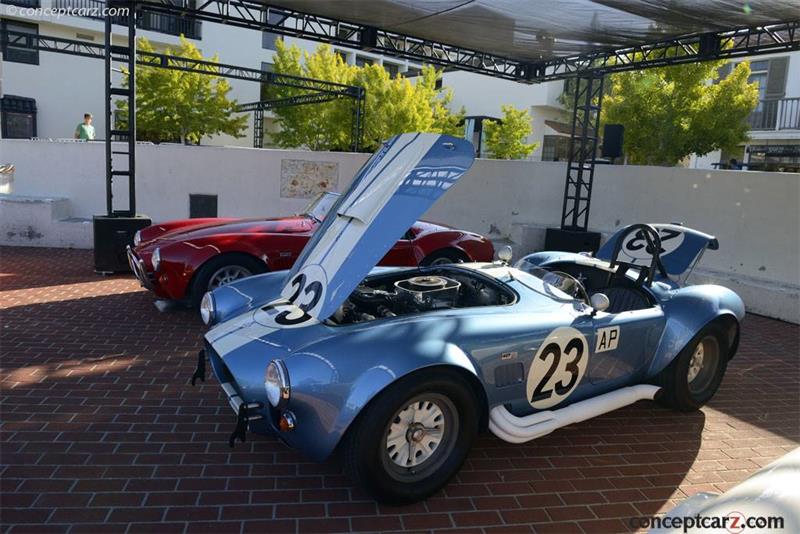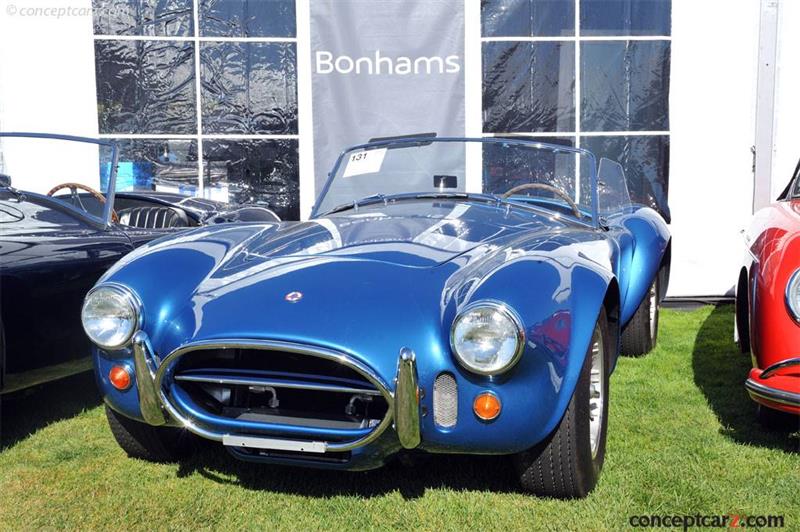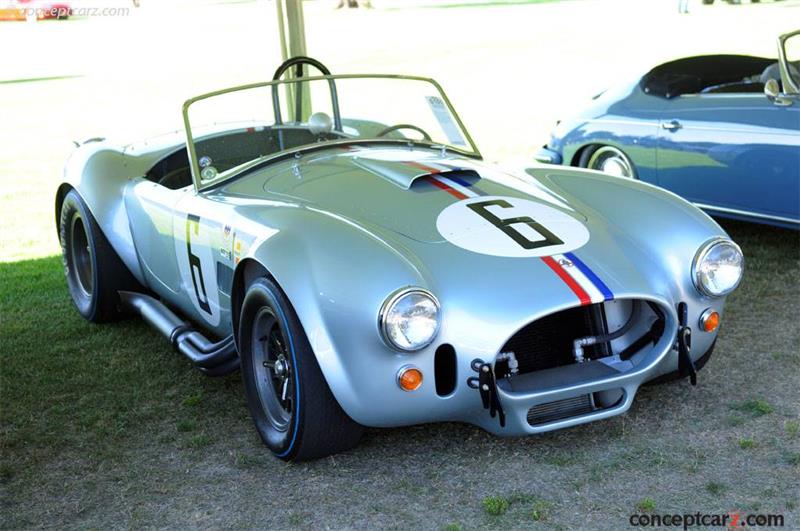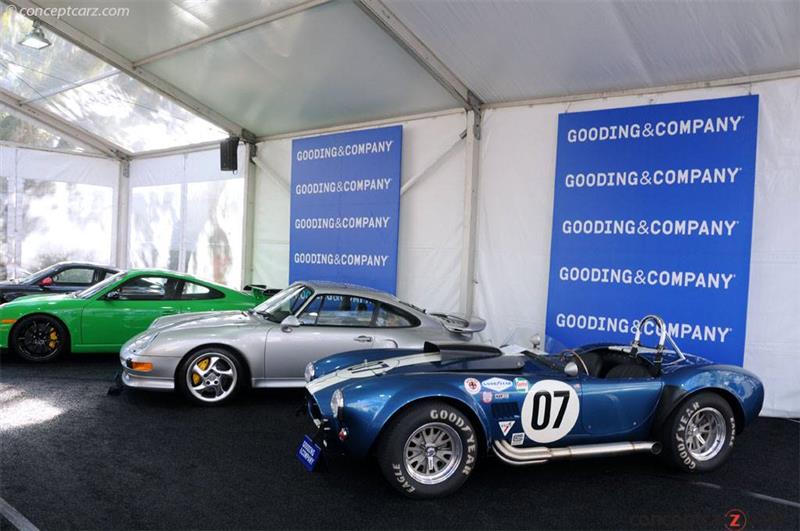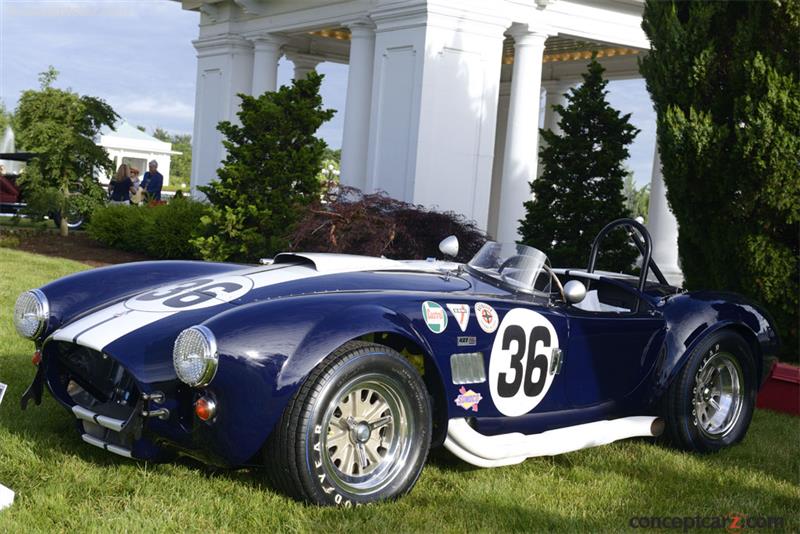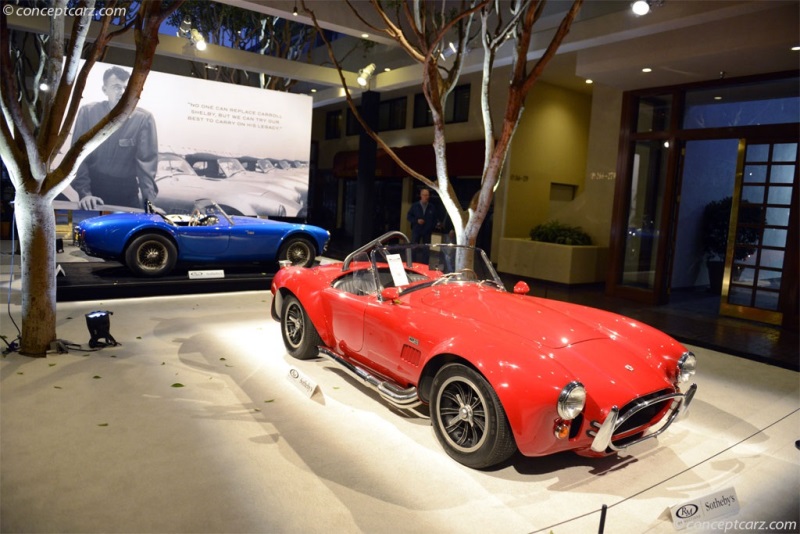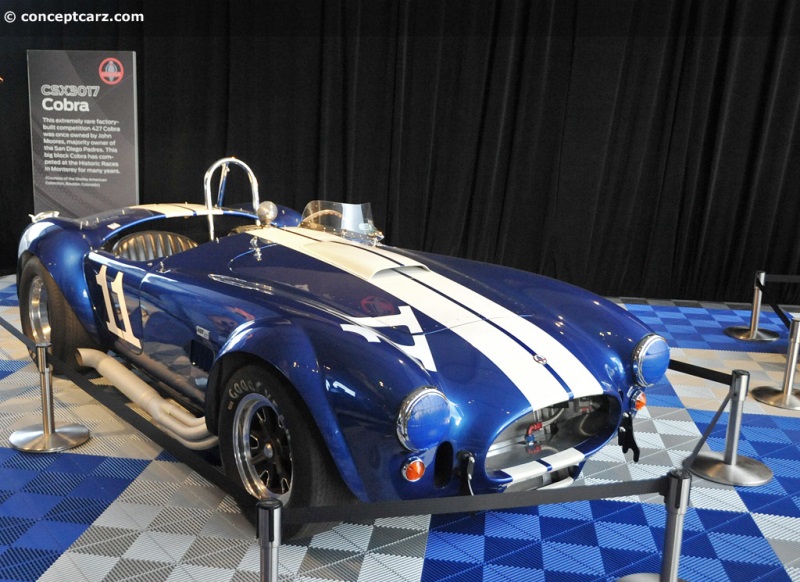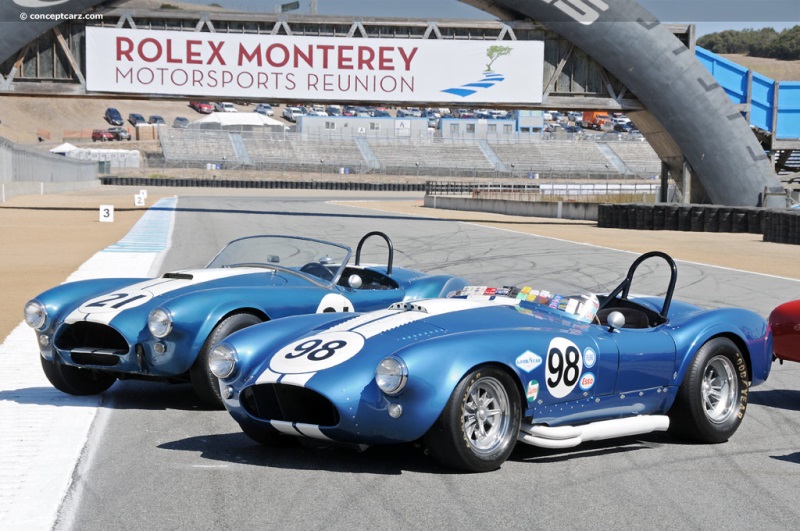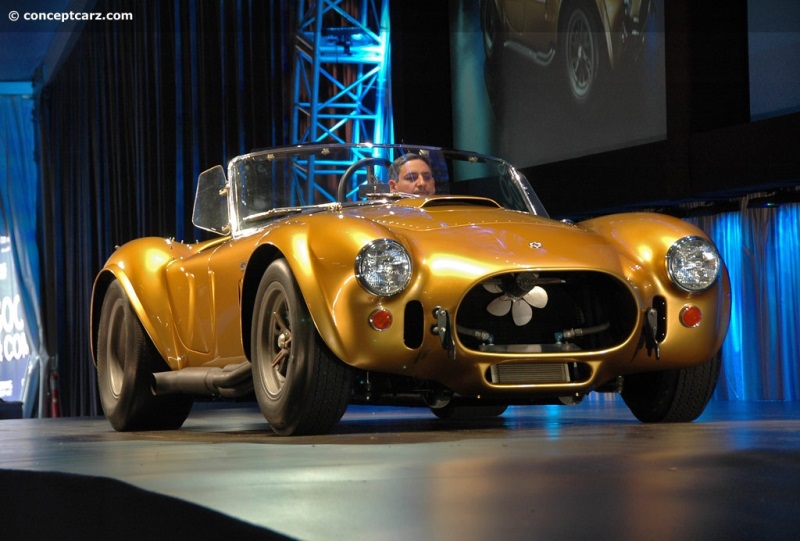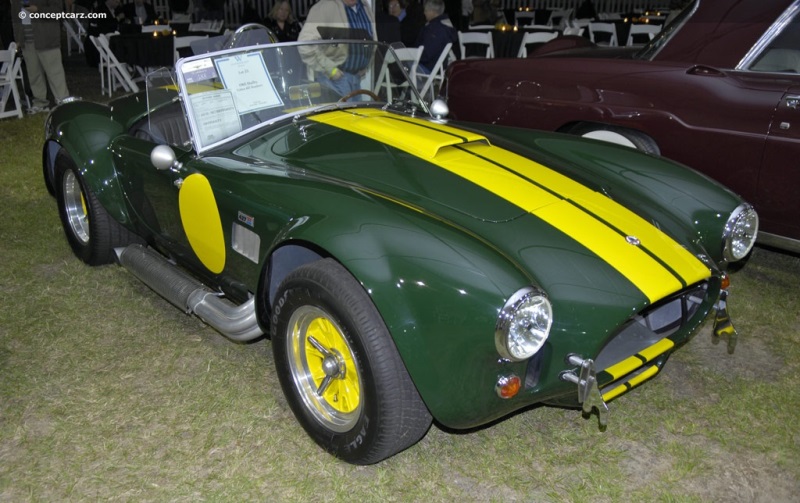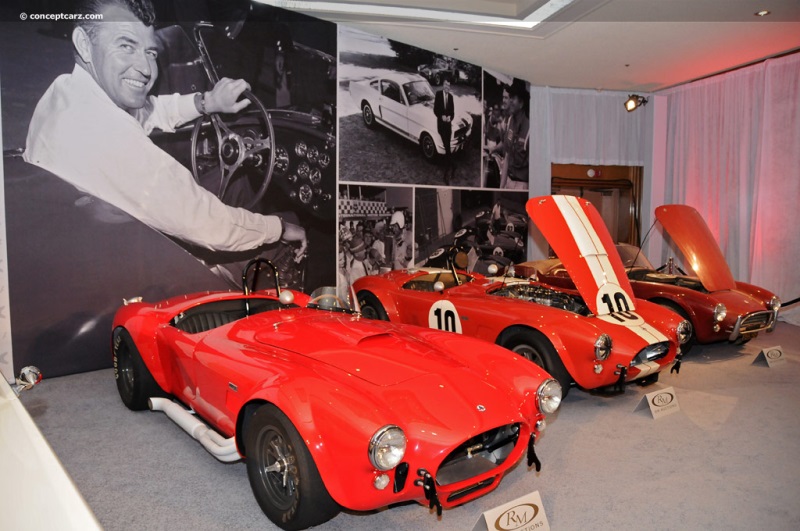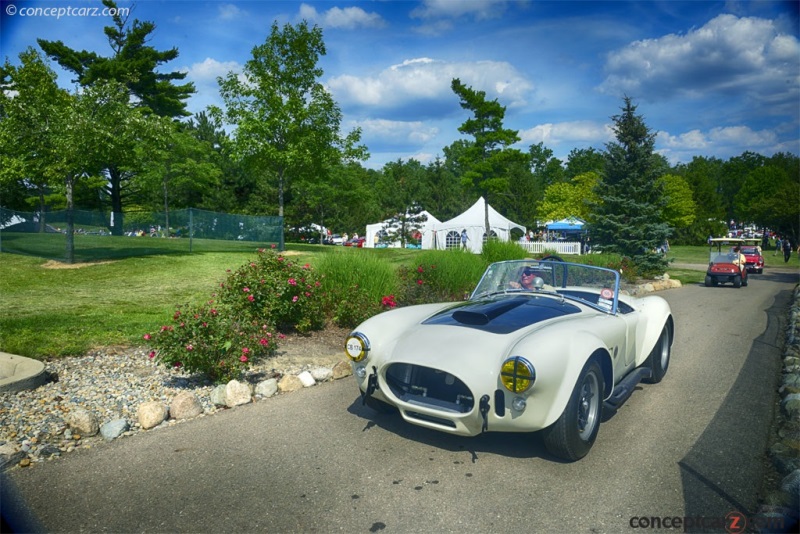Texan Carroll Shelby had raced in Europe during the late 1950s and realized that a combination of a European chassis and a lightweight American V8 engine may produce a winning combination. To test this theory, a Ford V8 was installed in the chassis of an AC Ace, giving birth to the 'Cobra.' Shelby had AC Cars send Cobras - albeit without engines - from England to be finished in California at his facilities. The 260 cubic-inch (4.2-liter) prototype first ran in January of 1962, with production commencing later that year. This was followed in 1963 by a more powerful 289 cubic-inch V8 (4.7-liter) engine. The major update for the MK II version was a rack-and-pinion steering system. In 1965, a new coil-suspended MKIII chassis was introduced to accommodate the Ford 427 CID (7-liter) V8 engine, which in race guise developed in excess of 500 horsepower. To help cope with the increase in power, it received wider bodywork, extended wheel arch flares, and a bigger radiator intake. 
S/C Replica
Chassis #: CSX 3198R
View info and historyFactory Shelby drivers included Ken Miles, Phil Remington, and Pete Brock, who were supported by other racing legends behind the scenes. Along with being faster than most other vehicles it raced against, the Ford-powered AC Ace-derived Cobra was also more reliable. This combination helped it win the U.S. Manufacturer's Championship consecutively in 1963, 1964, and 1965. The Shelby would also win the 1965 FIA World Manufacturer's Championship in 1965 with the Pete Brock-designed Daytona Coupe. The 427 was built in both Competition and semi, or 'street' competition (S/C) versions, with the 'S/C' being built from the unsold competition cars. These de-tuned versions were still capable of racing from 0-to-100 mph in 8.8 seconds and had a top speed of 165mph. AC had built 53 competition chassis (chassis number CSX3001 through CSX3053), and of those, 16 had been sold to private teams. The first two examples were retained as prototypes, and one chassis (CSX3027) was sent to Ford Engineering. The remaining 34 chassis were parked outside Shelby's L.A. warehouse seeking buyers. Shelby's east coast representative, Charles Beidler, suggested that they be painted and completed as street cars, opening them up to a wider audience of buyers. The idea worked, and the 427 S/C was born. While these remaining cars were being converted for street use, three more orders were received for full competition cars, for a total of 19 'production,' full-competition cars.427 Super Coupe : Type 65
Shelby had narrowly missed winning the 1964 Championship by a small margin, so Carroll set his sights on taking the title away from Ferrari for the 1965 season. He tasked Peter Brock, Director of Special Projects, with a project code-named the Type 65. With the new 427 engine offering an additional 100+ horsepower over the small block cars, Shelby American and Brock devised a new 427 'Super Coupe' which could take advantage of the infamous high-speed LeMans circuit.
Roadster
Chassis #: CSX3176
View info and historyUnfortunately, Shelby American was unable to produce the required minimum of 100 MK II 427 Cobras to comply with homologation to international long-distance endurance racing specifications. Shelby had been confident he could sell 100 examples of the competition-spec 427, and placed an order with AC for 100 examples. Each was finished in primer, with a black interior, and air shipped to Shelby's facilities upon competition. FIA inspectors came to inspect the progress on April 29th of 1965. When they arrived, they found just 51 cars completed and denied Shelby the homologation he was seeking. Shelby was not the only competitor to fail to meet the requirements, as Enzo Ferrari's 250 LM (intended to replace the GTO) was also denied approval. Instead, the Shelby team was forced to field the previous year's small block 289 Daytona Coupe. During this time, work on the Type 65 Super Coupe continued. Once Shelby was informed that the new 427 Cobra was ineligible to compete in the GT class, he canceled his order for the remaining competition cars, and AC began production of the street cars immediately. In June of 1965, the FIA re-arranged its classification system and created a new class called 'Competition GT', with production requirements of just 50, one less than the number of 427 competition cars built at the time of the FIA inspection. This meant the Cobra was now in the same class as Ford's GT40, creating a conflict of interest, as Shelby was running the program for Ford. Shelby resolved the problem by not campaigning his own car, leaving it in the hands of the privateers.After the drawings and one-quarter-scale model were built of the Super Coupe, the special competition chassis was built and shipped by AC Cars Ltd. to Harold Radford Coachbuilders, also in England. Detailed correspondence of Radford's progress was continually sent to the offices of Shelby American on a routine basis. During a trip by Shelby's Chief Engineer, Phil Remington, to Ford Advanced Vehicles in England, he discovered the work to be less than satisfactory. There were discrepancies in both the construction material and the dimensions. After relaying the news, Peter Brock immediately caught the next flight to England, where he would stay to oversee the efforts of Radford Coachbuilders to completion. It was determined that the original chassis was unusable, and a new competition chassis from AC Cars, Ltd. was built. 
Roadster
Chassis #: CSX4005LA
View info and history
Auction entries : 1All Shelby American Chassis numbers were given the CSX prefix (for Carroll Shelby Export), fitted with right-hand drive configuration, and delivered to Radford Coachbuilders in England. The new Super Coupe chassis, however, had a CSB prefix (for Carroll Shelby Britain) and the consecutive unit number of 3054. Radford showed little improvement in completing the special car, so Peter Brock had the chassis and body shipped to Shelby American in Los Angeles for the final installation of the drive train and completion. Around this time, Ford's GT MK II program was beginning to show promise prompting all available resources to be diverted to the Henry Ford assault on Enzo Ferrari. Ford would win at LeMans with the GT MK II (known as the GT40), signaling the end to the Super Coupe project. When Shelby American was liquidated, the Type 65 Daytona Super Coupe was sold as part of a package deal. It was later purchased by a Kansas collector and fabricator named Mike Dopudja of Colorado. With guidance from Peter Brock, the project was finally completed and made its debut at Riverside Vintage Races in 1981. It would be driven at various competition events by drivers such as Bob Bondurant, Brian Redman, Mike Dopudja, Bob Hindson, and Dick Smith.
by Daniel Vaughan | Oct 2019
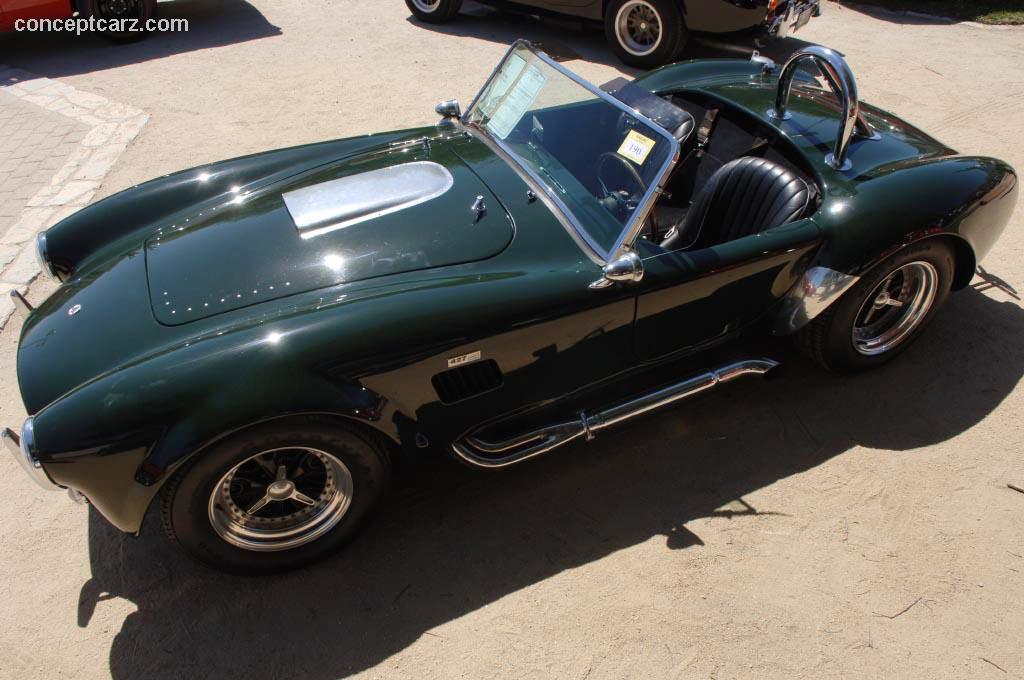
S/C Replica
Chassis #: CSX 3198R
View info and history
Shelby had narrowly missed winning the 1964 Championship by a small margin, so Carroll set his sights on taking the title away from Ferrari for the 1965 season. He tasked Peter Brock, Director of Special Projects, with a project code-named the Type 65. With the new 427 engine offering an additional 100+ horsepower over the small block cars, Shelby American and Brock devised a new 427 'Super Coupe' which could take advantage of the infamous high-speed LeMans circuit.
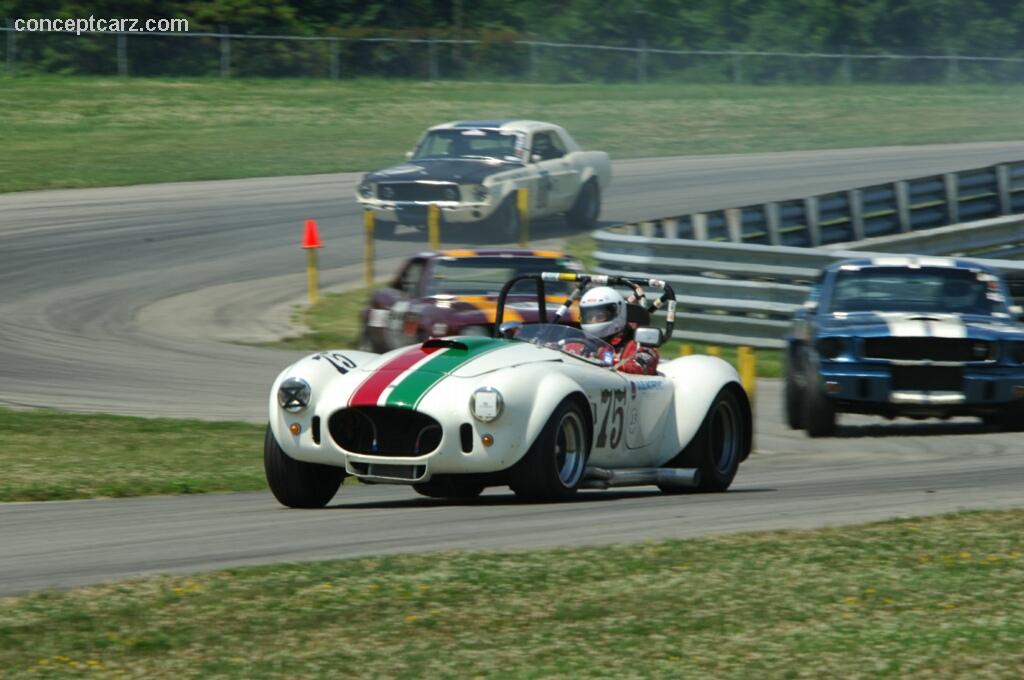
Roadster
Chassis #: CSX3176
View info and history
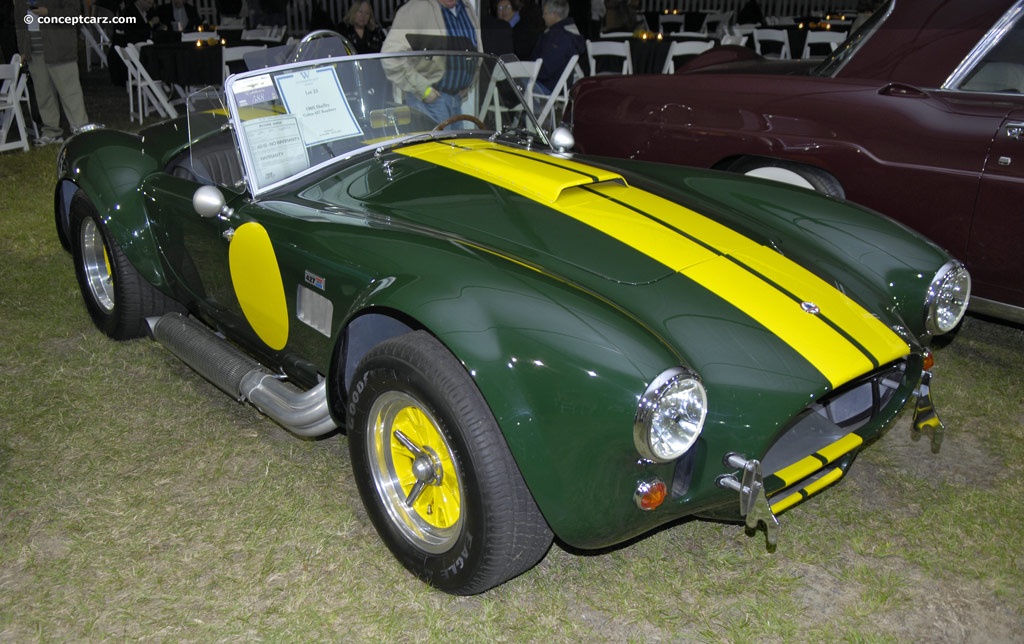
Roadster
Chassis #: CSX4005LA
View info and history
Auction entries : 1
by Daniel Vaughan | Oct 2019
Related Reading : Shelby Cobra History
The formula for the success of the Cobra came through a man named Carroll Shelby adapting a powerful Ford engine into a nimble, British sports car. A.C. Cars of Thames Ditton in Surrey, England had been producing the Ace since 1954. It was designed by John Tojeiro and featured an independent suspension by transverse leaf springs. The tubular frame body of the vehicle took its styling cues from....
Continue Reading >>
Continue Reading >>
1965 Shelby Cobra 427 Vehicle Profiles
Recent Vehicle Additions
Related Automotive News

Renowned Racing Legends Grant Exclusive Nod to the Rolex Monterey Motorsports Reunion for New Run Groups
As the Rolex Monterey Motorsports Reunion celebrates the Golden Anniversary of historic racing at Montereys WeatherTech Raceway Laguna Seca, the illustrious gathering also honors the history and significant achievements throughout time. It seems fitting...

Rolex Monterey Motorsports Reunion to Celebrate the Golden Anniversary of Historic Racing
From humble beginnings of a single day event in 1974 with 66 cars at Laguna Seca to one of the most revered historic racing events in the world attracting 400-plus entries, the Rolex Monterey Motorsports Reunion will celebrate the marques of the past...

SHELBY AMERICAN COMMEMORATES 50TH ANNIVERSARY FIA COBRA WITH SPECIAL EDITION CAR
Iconic Shelby FIA Cobra to be Celebrated
Scottsdale, Ariz. – Jan. 17, 2014 – In 1964, Shelby American, today a wholly owned subsidiary of Carroll Shelby International Inc. (CSBIPK) introduced the FIA version of the small block Cobra, w...
RRDC VOTES IN 37 NEW MEMBERS FOR 2013
HILLIARD, Ohio (Nov. 7, 2013) - Thirty-seven race-car drivers and motorsports professionals have been voted into the Road Racing Drivers Club in 2013. The group includes 13 Regular Members from the open-wheel and sports-car racing ranks, 20 Associate...

Sonoma Historic Motorsports Festival Celebrates Corvette'S 60 Years At Sonoma Raceway
Fast cars, fine food and wine highlight May 18-19 weekend
Paul Reinhart is honored guest, popular racing seminar scheduled for second year
SONOMA, Calif. (April 27, 2013) - The Sonoma Historic Motorsports Festival returns to Sono...























